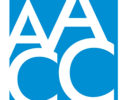The new majority
By AACC 21st Century Center Staff
February 27, 2018
Independent students are the new majority in higher education.
In the community college sector, it’s no secret that the “nontraditional” student is the “traditional” student. Those enrolling tend to be a little older with more responsibilities — jobs, families, etc. A new report from the Institute for Women’s Policy Research (IWPR) reveals that those nontraditional students now make up the majority of all postsecondary students.
As of 2012, 51 percent of all U.S. college students were independent. That means they had at least one defining characteristic outlined in the Free Application for Federal Student Aid (FAFSA), which include being at least 24 years old, married, has legal dependents, is a veteran, in foster care, or is someone who is homeless or at risk of becoming homeless.
“Independent college students’ life circumstances, and in turn their college experiences, are often dramatically different than those of dependent students,” says an IWPR release.
About 55 percent of women students were independent, compared to 46 percent of men, and independent students are more likely to be students of color. Another big find: compared with dependent students, independent students are nearly twice as likely to live with low incomes. And more than two thirds of independent students work while in school, with the majority working at least 20 hours per week.
Because of these added responsibilities and pressures faced by independent students, they are less likely to graduate than dependent students. Only one-third of these students earn a degree or certificate within six years, compared with more than half of their dependent peers.
So what can colleges do to help? IWPR’s recommendations include more professional development for faculty and staff so they may better understand the demands facing independent students. The organizational also recommends that “financial needs assessments at the federal, state, and institutional levels, account for the full array of school expenses experienced by independent students, including child care and transportation costs.”
How is your college helping independent students? Sound off at LinkedIn.



